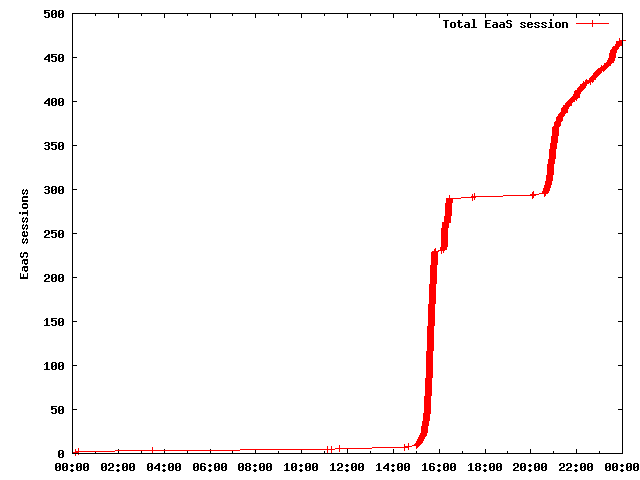On June 24th 9.30 AM EST Dragan Espenschied, Digital Conservator at Rhizome NY, released an editorial on rhizome.org featuring a restored home computer previously owned by Cory Arcangel. The article uses an embedded emulator powered by the bwFLA Emulation as a Service framework and the University of Freiburg’s computing center. The embedded emulator allows readers to explore and interact with the re-enacted machine.
Currently the bwFLA test and demo infrastructure runs an old, written off IBM Blade Cluster, using 12 blades for demo purposes, each equipped with 8 core Intel(R) Xeon(R) CPUs (E5440 @ 2.83GHz). All instances are booted diskless (network boot) with the latest bwFLA codebase deployed. Additionally, there is a EaaS gateway running on 4 CPUs delegating request and providing a Web container framework (JBoss) for IFrame delivery. To ensure, a decent performance of individual emulation sessions we assign one emulation session to every available physical CPU. Hence, our current setup can handle 96 parallel session.
Due to some social media propaganda and good timing (US breakfast/coffee time) our resources were exhausted within minutes.

The figure above shows the total number of sessions for June 26th. Between 16:00 and 20:00 CEST, however, we were unable to deal with the demand.

After two days however, load has normalized again, even though on a higher level.

Lessons learned
The bwFLA EaaS framework is able to scale with demand, however, not with our available (financial) resources. Our cluster is suitable for „normal“ load scenarios. For peaks like we have experienced with Dragan’s post, a temporary deployment in the Cloud (e.g. using PaaS / IaaS Cloud services) is cost effective strategy, since these heavy load situations last only for a few days. The „local“ infrastructure should be scaled to average demand, keeping costs running EaaS at bay. For instance, Amazon EC2 charges for an 8 CPU machine about € 0.50 per hour. In case of Dragan’s post, the average session time of a user playing with the emulated machine was 15 minutes, hence, the average cost per user is about 0.02€ if a machine is fully utilized.

